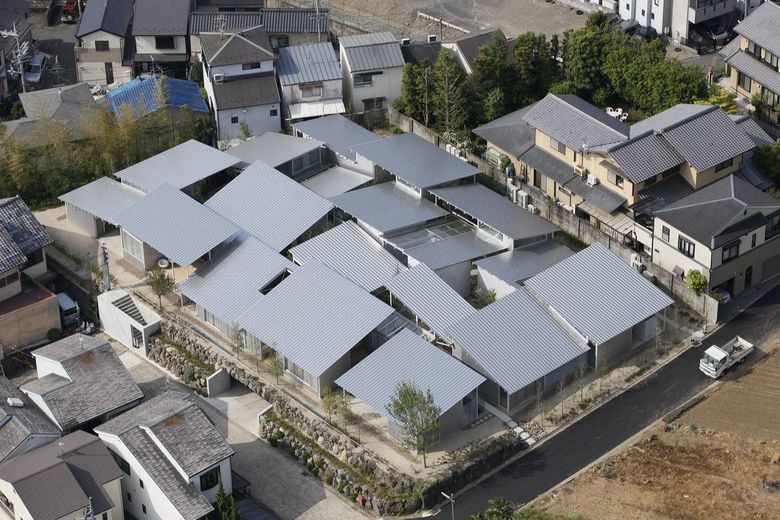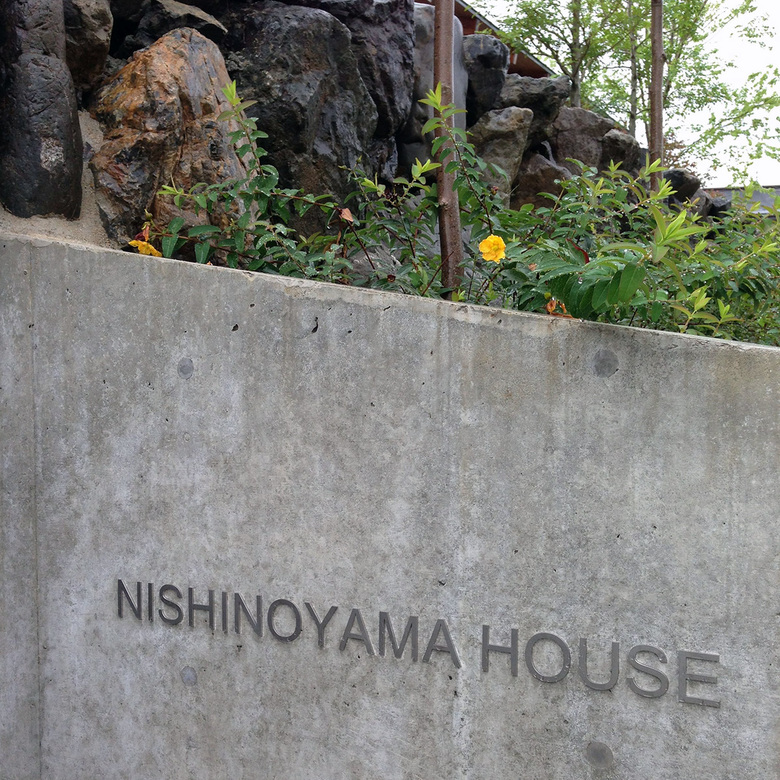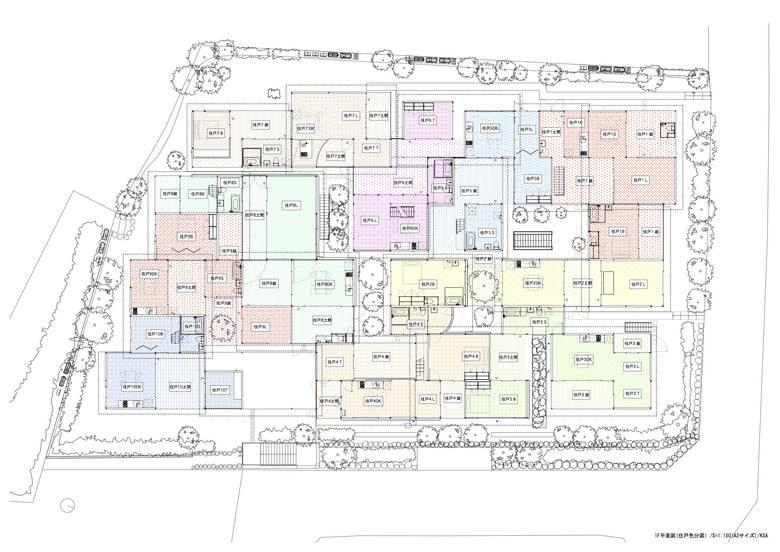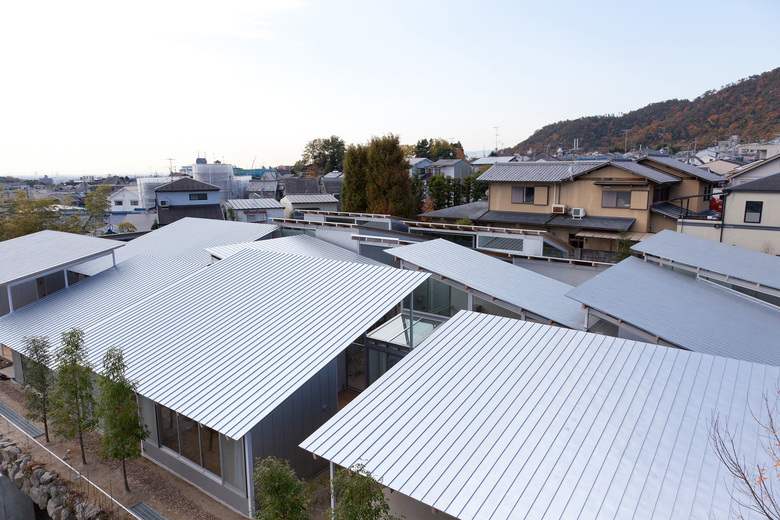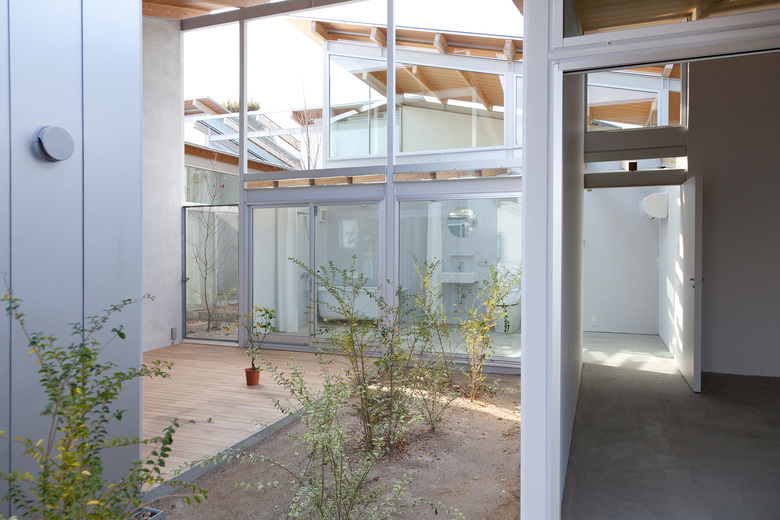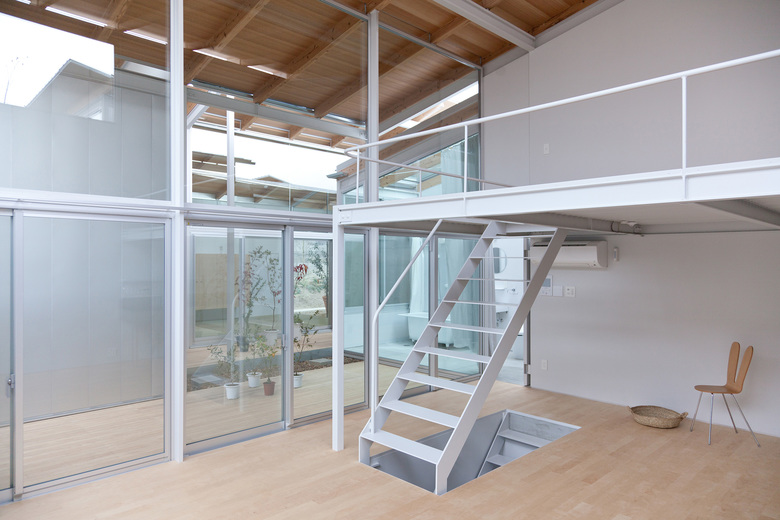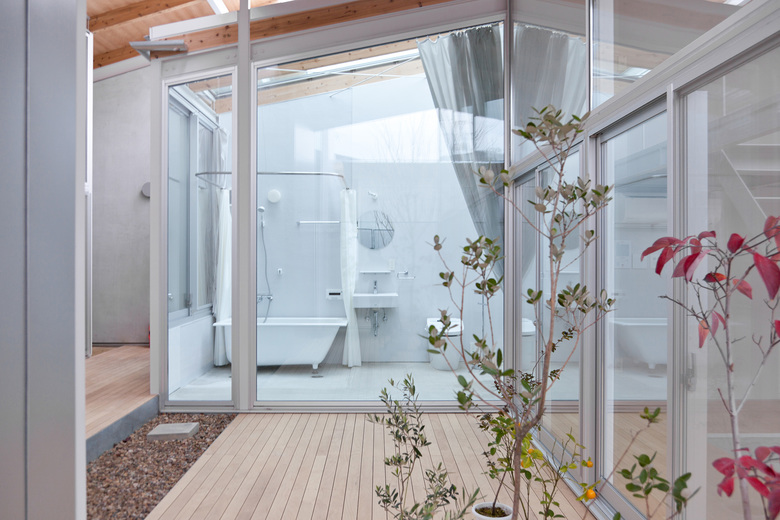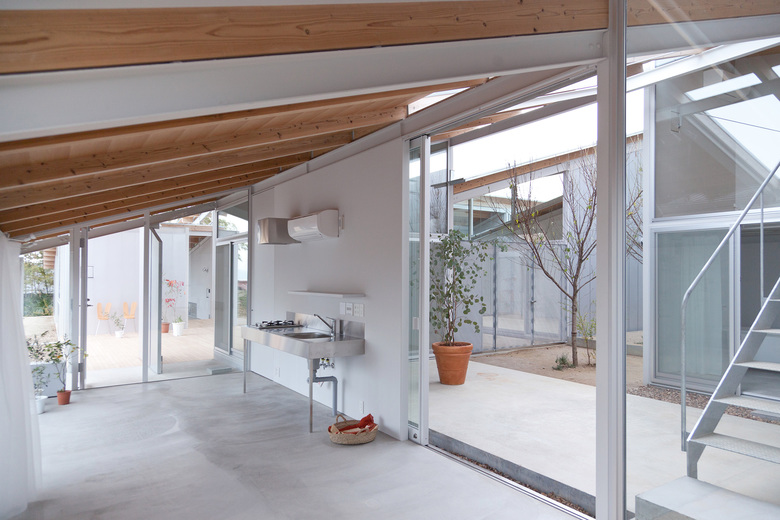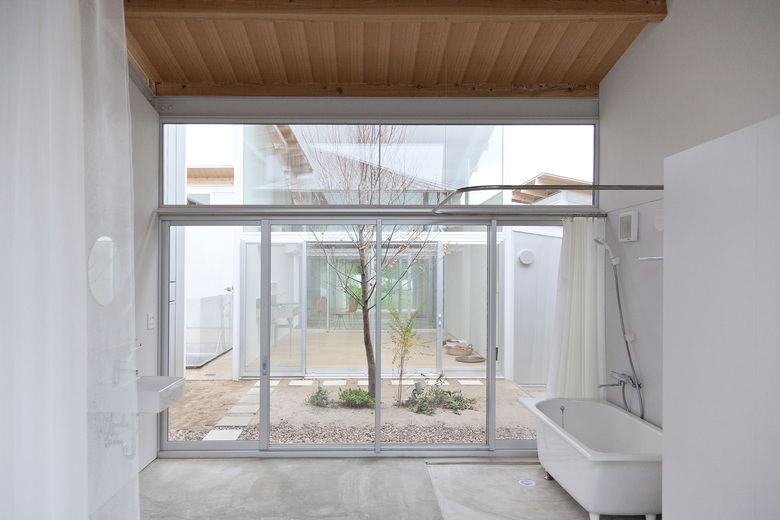17. September 2014
Photo: Iwan Baan
To understand Nishinoyama House, a small apartment complex on the outskirts of Kyoto, it helps to understand its roof.
The architect Kazuyo Sejima (a partner in the Pritzker Prize-winning firm SANAA) is known for low-slung buildings, their roofs parallel to the ground. But in Kyoto, new buildings are required to have pitched roofs, a rule meant to preserve what is left of the city’s character. Sejima (here working with her own firm Kazuyo Sejima & Associates) complied, and in the process gave the complex its most distinctive feature: 21 tilted roofs, each roughly the size of one of the neighboring cottages, together forming the simulacrum of a small village. But there is nothing conventional about Sejima’s roofs – in her hands, the angled planes of corrugated metal never meet at the expected ridges. Instead, they form a jauntily disjointed composition that hints at the sophisticated spatial organization of the apartments below.
Photo: Fred Bernstein
Indeed, the 10 units, with a total of some 40 rooms and 20 internal gardens, are interlocked in ways that defy easy comprehension. The absence of obvious party walls in the published floorplan (admittedly, a graphic as much as an architectural choice) makes the building read as a collection of interconnected rooms, the modern equivalent of Kyoto’s Nijo Castle, where shoji screens stand in for “conventional” walls and, depending on which are open and which closed, allow hundreds of different layouts. The plan has a kind of delicacy not normally seen in multi-unit housing.
Floor plan. Drawing: Courtesy of Kazuyo Sejima & Associates
In fact, the 10 units are completely separate. Each includes a living room, a kitchen, and a bedroom at grade level (which, in this case, means above a subterranean garage). Several have additional rooms on the same level. Five have “lofts” that fit under the roof peaks. (In those cases, headroom is in short supply.) Six have basement spaces, accessible from the garage as well as (in several cases) from the units themselves. Just one apartment has basement and loft spaces, making it a triplex. Overall, the sectional variety is astonishing for a building of about 9,500 square feet (880sm).
Photo: Courtesy of Kazuyo Sejima & Associates
All of the units have gardens, some of which serve as entryways, others as interior courtyards. Separating the rooms from the gardens are sliding glass doors that allow indoors and outdoors to merge seamlessly. Other windows, often clerestories above the sliding doors, are fixed in place. The use of floor-to-ceiling glass around small courtyards creates reflections and reflections of reflections – effects that are dazzling but might be distracting to live with. A plethora of shear curtains cuts glare but adds further ambiguity. The juxtaposition of indoor and outdoor spaces, without clear boundaries, offers myriad opportunities for living with nature even in a relatively urban setting.
Photo: Courtesy of Kazuyo Sejima & Associates
The rooms themselves are utilitarian, featuring white-painted walls from which appliances protrude, without any kind of millwork to soften their impact. (The same is true, regrettably, for through-the-wall air conditioning units.) Floors are either blond wood (indoors) or concrete (outdoors). Overhead, roofs are supported on wooden joists raised up on white-painted steel frames. Ceilings are also wood; the material adds a welcome domestic touch.
Photo: Courtesy of Kazuyo Sejima & Associates
One tenant, a glass artist, uses her space as a kind of showroom; displays of her transparent pieces show the architecture to best advantage, and vice versa. Another unit is the province of a sculptor, who travels widely and who uses the largest of his rooms – a loft-like space – as a studio.
One unit is occupied by a foreign couple, also artists, who said they hadn’t seen any of their neighbors’ apartments. And that suggests a limitation of Nishinoyama House. Despite a plan that makes it look as though the units are interconnected, the architects were almost too good at keeping them apart. There are, as a result, few opportunities for interaction, except perhaps in the garage.
Photo: Courtesy of Kazuyo Sejima & Associates
In short, the project breaks ground formally, with its incredibly elegant solution to the problem of high density, but it doesn’t tamper with the one-family, one-house paradigm. Still, if there’s anything architects should be doing more of, it is putting time into rethinking multi-family housing. Sejima has done that, and the result deserves careful attention.
Fred Bernstein
